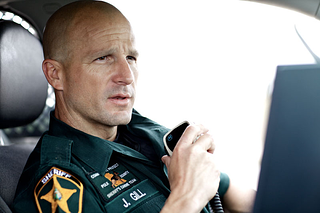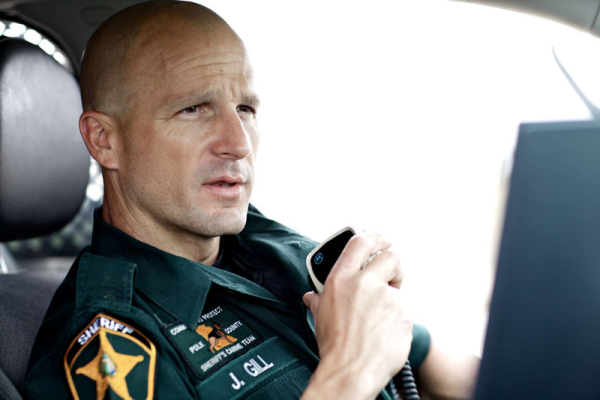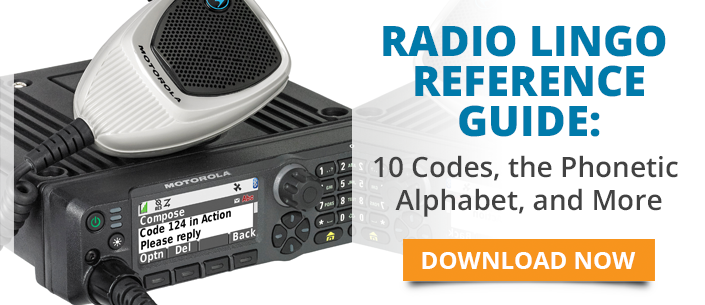The phonetic alphabet, or spelling alphabet, is one of the most universally recognized pieces of two-way radio lingo, and its history reveals a lot about the evolution of wireless technology and international cooperation.
If you’ve ever had to spell, then respell, then spell again a series of letters over a phone or two-way radio, you can understand why the spelling alphabet was developed. Many letters sound the same, and rather than risk miscommunication during mission critical transmissions and wartime broadcasts, officials adopted a universal set of words to represent letters.
For those of you curious about the history and usage over time, here’s a rundown of the Alpha Bravo Charlies (ABCs) of the two-way radio alphabet.
NATO Alphabet
In general, when people talk about spelling alphabets, they’re referring to the NATO alphabet, considered the international phonetic alphabet, that took effect starting in 1956. Because NATO allies led the effort for one universal standard, the alphabet was nicknamed after the organization.
There are other versions, too, including a police phonetic alphabet and military phonetic alphabet. For our purposes, we’ll stick to the NATO alphabet’s history and use. According to NATO, the first alphabet to be recognized internationally was developed in the 1920s by the International Telecommunication Union (ITU).
It borrowed heavily from the names of locales around the world:
Amsterdam, Baltimore, Casablanca, Denmark, Edison, Florida, Gallipoli, Havana, Italia, Jerusalem, Kilogramme, Liverpool, Madagascar, New York, Oslo, Paris, Quebec, Roma, Santiago, Tripoli, Uppsala, Valencia, Washington, Xanthippe, Yokohama, Zurich
Military Alphabets
In the early 1940s, military branches in the U.S. and Britain adopted their own alphabet, also known as the Able Baker alphabet after the first two code words used.
The Able Baker alphabet codes were:
Able, Baker, Charlie, Dog, Easy, Fox, George, How, Item, Jig, King, Love, Mike, Nan, Oboe, Peter, Queen, Roger, Sugar, Tare, Uncle, Victor, William, X-ray, Yoke, Zebra
Under criticism that the words and sounds were too steeped in the English language, a survey was conducted in the 1950s that led to development of the codes used today.
Today’s Alphabet
Effective March 1, 1956, NATO member states adopted a new alphabet that took into account speakers of multiple languages, including English, French and Spanish. The ITU adopted it a few years later, “making it the established universal phonetic alphabet governing all military, civilian and amateur radio communications,” according to NATO.
Today, the codes are recognized as:
Alpha, Bravo, Charlie, Delta, Echo, Foxtrot, Golf, Hotel, India, Juliett, Kilo, Lima, Mike, November, Oscar, Papa, Quebec, Romeo, Sierra, Tango, Uniform, Victor, Whiskey, X-ray, Yankee, Zulu
Beyond Military Use
While the alphabet codes evolved in the context of military, civil aviation and maritime use, civilians also got in on the act. As early as 1928, Americans were taught to use a set of codes when sending telegrams as well:
Adam, Boston, Chicago, Denver, Edward, Frank, George, Henry, Ida, John, King, Lincoln, Mary, New York, Ocean, Peter, Queen, Roger, Sugar, Thomas, Union, Victor, William, X-Ray, Young, Zero
Two-way radios and other technology have largely replaced telegrams, and today, the codes are part of all two-way radio users’ vocabulary. Users and industries include:
- Law enforcement
- Security
- Manufacturing
- Retail
- CB radio lingo
- Transportation
- Education
It’s also common to hear them used by heavy phone users as well, including customer service agents and operators.
Radio Lingo Explained
Along with 10 codes and terms such as “Roger that,” the spelling alphabet is one of the most enduring parts of the legacy of two-way radio. While they were first developed to ensure communications at a time when radio technology had limitations in terms of sound quality and audibility, they persist today because of their history and convenience.
Now that you have some of the terminology down, the next step is to ensure that you have the best communications system in place for your organization. This includes two-way radio solutions, wireless networks, and distributed antenna systems. Contact Chicago Communications today to learn more.



